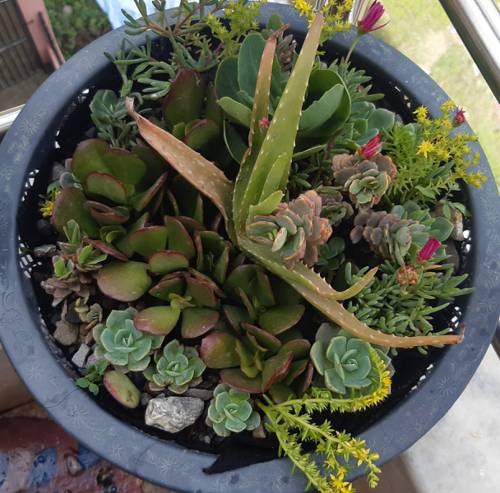
FAQ About Indoor Plant Bioremediation Abilities

What is indoor plant bioremediation?
Indoor plant bioremediation refers to the process where certain indoor plants detoxify environments by absorbing, breaking down, and converting organic pollutants into less harmful substances. These plants can help improve indoor air quality by removing chemicals such as formaldehyde, carbon monoxide, benzene, and others found in common household products.

How do plants detoxify indoor air?
Plants detoxify indoor air primarily through their leaves and roots. Leaves absorb air pollutants, and microbes in the soil and plant roots metabolize these compounds, rendering them harmless. This process is known as phytoremediation. Additionally, plants release oxygen and moisture, contributing to a healthier indoor environment.

Which indoor plants are best known for air purification?
Some of the best indoor plants for air purification include the Snake Plant (Sansevieria), Peace Lily (Spathiphyllum), Spider Plant (Chlorophytum comosum), Boston Fern (Nephrolepis exaltata), and Aloe Vera. These plants are effective at removing toxins from the air and are also generally low-maintenance.

Can indoor plants really improve air quality significantly?
Yes, indoor plants can significantly improve air quality by removing airborne toxins, though their effect may vary based on the number of plants and the size of the room. NASA's Clean Air Study highlighted certain plants' ability to remove up to 87% of volatile organic compounds (VOCs) in a 24-hour period, under specific conditions. However, a larger number of plants may be needed for noticeable improvement.

How many indoor plants are needed to purify a room?
The number of plants needed to purify a room depends on the plant type, room size, and the level of pollutants present. Studies suggest that approximately one plant per 100 square feet can positively impact air quality. However, for significant air purification, a denser concentration of plants may be required.

Do indoor plants help with reducing mold indoors?
Some indoor plants, like the Peace Lily and English Ivy, are known to reduce mold spores in the air due to their ability to absorb excess moisture and contaminants. By controlling humidity levels and filtering the air, these plants can help mitigate mold growth in indoor settings.

Are there any health benefits to having indoor plants aside from air purification?
Yes, aside from purifying the air, indoor plants are known to improve mental well-being by reducing stress, enhancing mood, and increasing productivity and focus. They also contribute to a more pleasant and aesthetically appealing environment, which can enhance overall quality of life.

Can indoor plants remove formaldehyde from the air?
Certain indoor plants are effective at removing formaldehyde from the air. NASA's Clean Air Study identified plants like the Boston Fern, Rubber Plant, and Spider Plant as capable of filtering formaldehyde, a common indoor pollutant emitted from building materials and household products.

Do all indoor plants have bioremediation abilities?
Not all indoor plants have bioremediation capabilities to the same extent. While most plants contribute to a healthier atmosphere by releasing oxygen and moisture, only specific species are effective at removing significant levels of indoor pollutants. Choosing plants recommended for air purification can enhance bioremediation outcomes.

Is it better to have a variety of plants for bioremediation, or just one type?
Having a variety of plants can enhance bioremediation effects, as different plant species are efficient at removing specific toxins or pollutants. A diverse plant collection can cover a broader spectrum of pollutants, thereby providing more comprehensive air purification than relying on a single type of plant.

How does the soil affect a plant's ability to purify air?
The soil in which a plant is potted plays a significant role in its air purification effectiveness. The soil hosts beneficial microbes that work with plant roots to break down toxic substances absorbed from the air. Ensuring quality soil with adequate microbial activity can enhance the plant's bioremediation effectiveness.

Can indoor plants help with reducing airborne toxins from tobacco smoke?
Certain indoor plants can absorb toxins found in tobacco smoke, such as benzene and formaldehyde. Plants like the Peace Lily and Bamboo Palm are known for their ability to filter these pollutants from the air, though they alone may not entirely remove the hazards associated with tobacco smoke indoors.

Are there any studies that support the effectiveness of plants in air purification?
Yes, there are multiple studies supporting plants' ability to purify indoor air. One of the most cited is NASA's Clean Air Study, which demonstrated that certain plants could remove volatile organic compounds from enclosed spaces. Various follow-up studies have supported these findings, emphasizing plants' potential in improving indoor air quality.

Do indoor plants contribute to humidity levels?
Yes, indoor plants can contribute to increased humidity levels through a process called transpiration, where they release water vapor into the air from their leaves. This can help maintain a comfortable indoor humidity level, reducing issues like dry skin and respiratory problems.

What is the role of microbes in indoor plant bioremediation?
Microbes in the soil play a critical role in indoor plant bioremediation. These microorganisms help break down pollutants absorbed by the plant roots, facilitating the conversion of harmful substances into less toxic forms. This symbiotic relationship enhances a plant's ability to purify indoor air.

Can indoor plants absorb heavy metals from the air?
Some indoor plants are capable of absorbing trace amounts of heavy metals from the air, although their primary role is to metabolize organic pollutants. The presence of certain soil microbes helps in the breakdown and immobilization of these metals, though plants should not be solely relied upon for heavy metal remediation indoors.

What common pollutants can be removed by indoor plants?
Indoor plants are known to remove a variety of common pollutants, including formaldehyde, benzene, trichloroethylene, xylene, toluene, and ammonia. These compounds often originate from cleaning products, building materials, and other household items and contribute to poor indoor air quality.

How does plant size affect its ability to purify air?
The size of the plant often correlates with its ability to purify air due to the larger leaf area for absorbing pollutants. Larger plants generally offer more surface area for air exchange processes, enabling more effective removal of airborne toxins. However, root and soil health also significantly impact a plant's overall purification capability.

Can using indoor plants for bioremediation replace commercial air purifiers?
While indoor plants enhance air quality and provide several added benefits like aesthetic appeal and mental well-being, they may not entirely replace the power and efficiency of commercial air purifiers. Plants work best as part of a holistic approach to improve air quality, complemented by proper ventilation and other purification technologies.

Are succulents effective in air purification?
Succulents, like Aloe Vera, are somewhat effective in air purification because they can remove certain toxins; however, they generally do not have the same bioremediation power as other plants such as ferns, palms, and lilies. They do contribute positively by releasing oxygen and improving indoor aesthetics.
